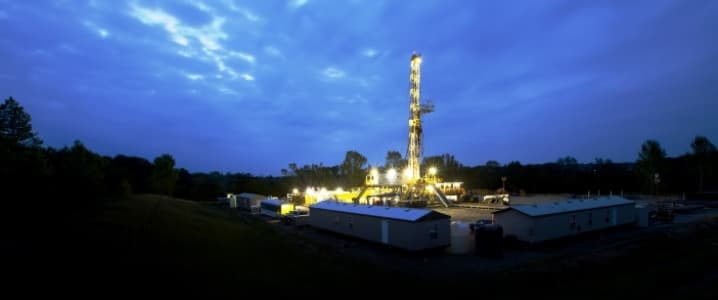Colombia’s oil production has been falling for the last four years. It’s not just the 2014 price crash that pressured output: The country’s fields are depleting and new discoveries are hard to come by because of high production costs, security challenges, and opposition from the population.
Earlier this year, Colombia’s Comptroller General warned that the country could lose its energy independence by 2021 if this state of affairs continues. What’s more, if production continues to fall, Ecopetrol will find it hard to service its refineries, which have a combined daily capacity of 420,000 barrels.
Colombia’s oil and gas is difficult to extract, so Ecopetrol and foreign field operators need prices to be higher than US$50 to turn a profit. At this year’s end, daily crude oil output in the Andean nation is seen at 872,000 bpd, down from over 1 million bpd in 2013, at the peak of the last commodity cycle.
Reserves are also falling at an alarming rate.
Last year, proven oil reserves slid to 1.673 billion barrels from 2.308 billion barrels at the end of 2014. There have been no big discoveries since 1992, despite international oil price trends over this period.
Yet declining reserves are only part of the problem. Related: Qatar Aims To Ease Its Reliance On LNG Exports
For years, Colombia’s oil industry has suffered from the conflict between the country’s governments and the Revolutionary Armed Forces of Colombia, or FARC. This has delayed an expansion of Colombia’s oil industry that would have helped stave off the depletion in old fields, discouraging investments in guerilla-controlled areas.
The end of last year saw the government and FARC sign a peace treaty that led thousands of guerilla fighters to turn in their weapons and return to civilian life, which is good news for the industry--in theory. In practice, potential investors are likely to wait a while and see if the peace deal holds, as attacks from militants on oil infrastructure continue.
Then there is local opposition to oil and gas drilling. In June, the Colombian Petroleum Association warned that a string of local referendums targeting oil and gas drilling could hamper the industry’s development. At the beginning of that month, the residents of a municipality in the Meta province voted overwhelmingly in favor of a referendum seeking to ban oil and gas exploration in the area.
There are 20 more scheduled, according to the head of the CPA. This will be another obstacle for new investments, despite government efforts to incentivize investors, including tax and duty incentives and the allocation of three special economic offshore zones for oil and gas exploration.
Finally, the state of the oil and gas infrastructure in the country is far from exemplary. According to Global Risk Insights, the current capacity of Colombia’s pipeline network is 1 million bpd, which is more than the current local output but less than what Colombia wants to produce. The alternatives, road and rail, are also in less-than perfect shape, which increases transportation costs and safety.
Related: Forget Oil Prices, Oil Majors Are A Buy
Colombia is now set to focus on unconventional oil and gas, Ecopetrol’s new chief executive told Reuters in a recent interview. Expert estimates, Juan Carlos Echeverry said, had put the country’s recoverable shale oil reserves at between 2.5 and 7 billion barrels, making them the third-largest in the western hemisphere, after the U.S. and Argentina.
ADVERTISEMENT
Shale oil and gas abundance could partially solve the reserves decline problem, as long as production costs can be brought down to a more affordable level. The other problems are yet to be solved.
By Irina Slav for Oilprice.com
More Top Reads From Oilprice.com:
- Oil Prices Boosted By String Of Bullish News
- Blockchain Tech Could Disrupt The Oil Industry
- Libya’s Biggest Oil Field Shut Down As Tensions Rise


















